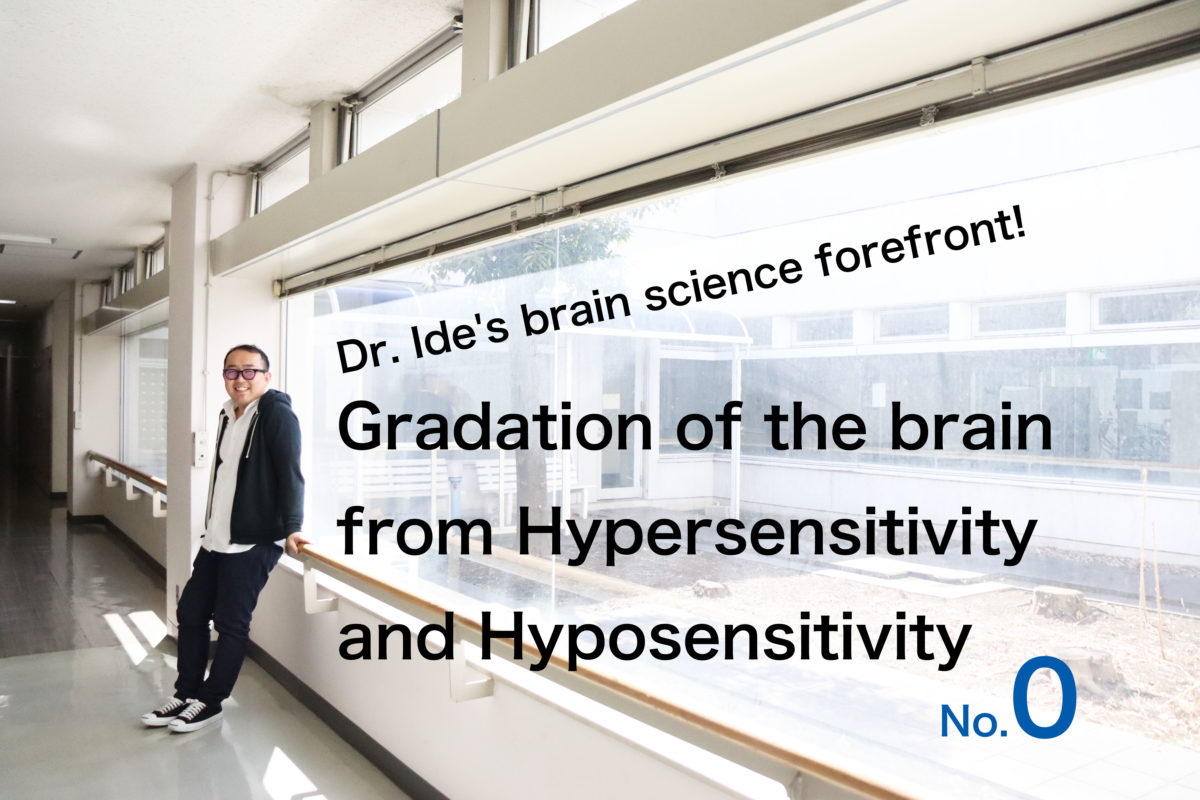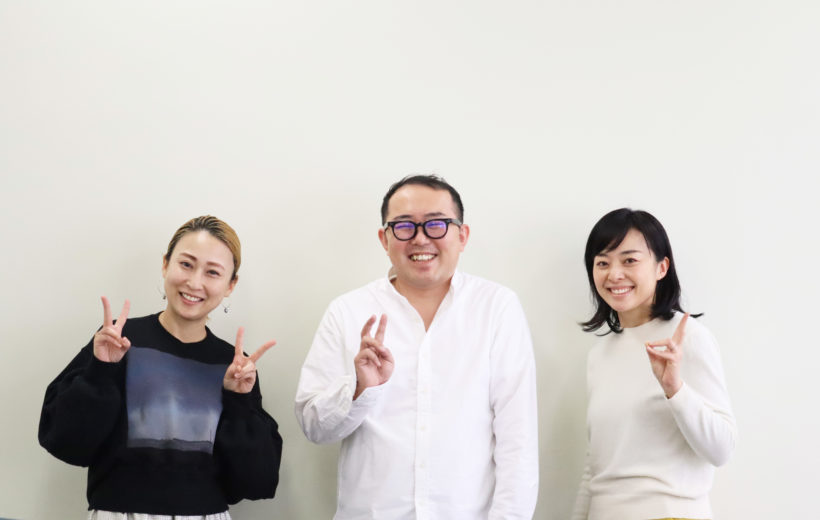Dr. Ide's brain science forefront!|Prologue- starting the project

Dr. Ide's brain science forefront!
Gradation of the brain from Hypersensitivity and Hyposensitivity
●Read all articles in English
●Read all articles in Japanese
目次
Dr. Ide, a brain science researcher, is in the world of sensation!
Hello. I am Rena Hirabaru from the mazecoze*Laboratory Tokyo, Japan. *It is a word that means many elements are mixed and combined. Please allow me to introduce myself. I am a freelance diversity planner, facilitator and editor, and have been engaged in various projects to encourage diversity, such as promoting employment of the disabled and creating a social design framework. For me, diversity is about creating value, choice and freedom through differences. "mazecoze" in Japanese means mixing various things, and it is truly diversity! We use this word to express our desire to "Encourage your own freedom" by integrating diverse people, values and viewpoints. The mazecoze Laboratory is a project that I value and would like to nurture with great care. ●About mazecoze LaboratoryAboutThis year, I am honored to announce the start of our new series of an article with Dr. Masakazu Ide, a Japanese researcher at Research Institute of National Rehabilitation Center for Persons with Disabilities. Dr. Masakazu Ide is a neuroscientist interested in sensory and motor processing in the brain of people with autism spectrum disorders (ASD). His works are mainly focused on superior perceptual abilities of ASD when processing sensory information. Specifically, Dr. Ide is studying how those abilities link pathological states of sensory hypersensitivity. ●Research Institute of NRCD - Masakazu Ide The articles will be based on his neuroscience research and will help you understand the world of sensation! I named it "Dr. Ide's brain science forefront! Gradation of the brain from Hypersensitivity and Hyposensitivity.” I first met Dr. Ide in fall 2019. Dr. Ide generously taught me about his research theme of "how hypersensitivity occurs in the brain" instead of introducing himself. Hypersensitivity, hyposensitivity, GABA, multisensory, neurodiversity, developmental coordination disorder, and so on. Along with unfamiliar words, I was amazed how diverse the brain world is with its gradations. Also, despite restrictions he might have to disseminate his research information, he did not hesitate to provide us information and his willingness was so powerful, which made me very impressed! But I must confess…. With my understanding, I understood only half of what he said. Even so, there are three things I could clearly understand. 1. Dr. Ide is conducting significant research on the neurophysiological basis of sensory processing disorders (Hypersensitivity, hyposensitivity, etc.) and has the primary information generated from that research. 2. However, the research is very professional and too hard for the public to understand. 3. Dr. Ide would like to widely disseminate his research information as useful information for our lives. As I am one of the people who is interested in senses, I would like to learn more from Dr. Ide, and think about what mazecoze Laboratory can do.
Creating opportunities to understand the diversity of senses
Sensation is an invisible world. It is not easy to convey and make people understand what exactly is happening as a feeling in themselves. Before that, many people may not be aware of the diversity of their senses. Some people, from children to adults, have difficulties in their lives because of sensitivity or insensitivity to varying degrees. According to Dr. Ide, 90% or more of people with developmental disorders might have hypersensitivity. (It does not mean that people with sensory sensitivity have a developmental disorder). Even adults find it difficult to have the option to control their own sensory characteristics or to obtain primary information. Dr. Ide gives examples of children’s difficulty with hypersensitivity. "I can't concentrate in class because of the noise of the air conditioner." "The clothes tag on my back is prickling and painful." "The sun is so bright that I have a headache during activities outside." and "The white notebook is too bright for me to read." This would be only a few of many examples To make matters worse, it is not easy to explain the pain, because people around them cannot understand it. I think there are children who are suffering helplessly because people around them may label them as "selfishness" or " intolerant " because of the physical and sensory difficulties they experience in daily group activities. I would like to deliver Dr. Ide’s research especially to people who are suffering from sensitivity. By learning from his research, You may be able to learn the characteristics of your senses from the viewpoint of neuroscience, which leads to self-understanding. You may be able to be nicer to yourself. It gives everyone an opportunity to realize that we are all different. You will be able to communicate your feelings to people around you in a way that is easy to understand. I strongly believe that it will be an experience that will lead to change society for itself. I thought that we, mazecoze Laboratory, might be able to summarize Dr. Ide’s research into something that can be read by children in the upper grades of elementary school. I explained my belief to Dr. Ide, and he said, "As a researcher, I am very much looking forward to the idea of raising awareness and disseminating information, because it will lead to a society in which the entire society understands the characteristics and accepts the people involved." I got very excited to hear his words. I am very grateful to have an opportunity to share information on the research that he has been working so hard on!Attention to simplicity!
In the following main part of "Dr. Ide's brain science forefront!", we will summarize 1 article and 1 item in the form of question & answer to Dr. Ide. Rather than just explaining words, I would like to convey the cutting edge of his research by thinking about "What does Dr. Ide think about that?" and "What can we learn from this and how can we put it into our lives?". One day in February, we visited the Research Institute of National Rehabilitation Center for the Persons with Disabilities for interviewing Dr. Ide. Thanks to Dr. Ide’s patience with listening to our repeated questions and his kindness enough to answer all our questions, I finally understood a little of the world of sensation. The following main story will be presented with illustrations (actually I drew ☺). It is already read by children who are now 4th and 5th graders, as well as elementary and junior high school teachers. We will continue to arrange it in a more interesting and easy to read manner.Member of this project

Dr. Ide (center), Hirabaru (left), and Kana (right)
This article is translated from Japanese to English by a project member, Kana. Kana, a freelance concierge and translator, started her own business after working at five-star hotel in Tokyo as a concierge for 10 years. She received a B.A. in Elementary Education major from College in the U.S. Now, she restudies education focusing on STEAM education, gifted programs, and special education with diversity.Dr. Ide's brain science forefront!
Gradation of the brain from Hypersensitivity and Hyposensitivity
●Read all articles in English
●Read all articles in Japanese
研究員プロフィール:kana
コンシェルジュ、翻訳家
米国大学にてElementary Educationの学位取得。
外資系ホテルでコンシェルジュを経て、独立。
フリーランスでコンシェルジュ業、翻訳等の仕事をしながら、steam教育、gifted 発達障害等ダイバーシティ勉強中。
→ 「kana」の関連記事を見る